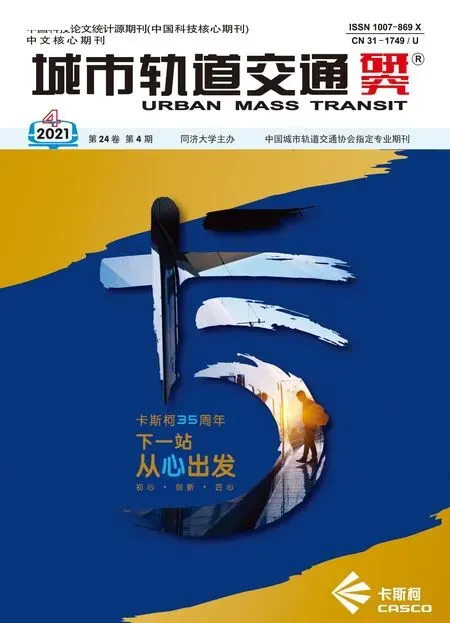城市数字化转型给轨道交通带来的机遇和挑战
2021-04-02汪小勇
汪小勇
(卡斯柯信号有限公司,技术总监)
人类社会进入21世纪以来,通信信息技术得到了快速发展,世界正被不断数字化,物理空间和数字空间的联接越来越密切且相互作用力越来越大。城市作为承载现代文明的主体,在数字化浪潮中转型,变得更加绿色、宜居、智能,已成为全球的共识。2020年底,上海市公布的《关于全面推进上海城市数字化转型的意见》中明确提出“要统筹推进经济、生活、治理的全面数字化转型,到2025年形成国际数字之都的基本框架”。在这一过程中,轨道交通作为公共交通的骨干,是城市数字化转型的重要参与者和获益者。
城市数字化整体转型将激活数据全要素动能,破除数据壁垒,为建立轨道交通建设运营决策模型并获取最优解奠定基础。通过对融合各式交通和热点区域的客流数据进行时空分布趋势的分析和预测,实现以“客流与车流匹配、精准投放运力”为目标的智能调度运营。城市数字化转型将加快数字基础设施建设,新技术的广泛应用将促进轨道交通技术装备的智能化升级,在BIM(建筑信息模型)的基础上实现设备状态在数字空间的同步推演,促进智能运维系统更经济有效地进行设备全寿命周期的健康度管理,增强轨道交通运营可靠度和风险预知能力,降低维护成本。
轨道交通作为城市数字化转型的参与者,其运营效率和服务质量的提升将成为重要衡量指标。一方面,在城市土地供给受限条件下,利用数字资源挖掘线路、车辆、车站、场段等基础设施的潜力,以更高效能的运控系统增加运能、缩短行车间隔、提高运行速度及运营效率。另一方面,充分利用数字空间的优势来解决实体车站空间的受限问题,实现数字空间和实体车站的有机融合,以智能车站拓展乘客服务边界,让乘客随时随地都能了解车次和客流,利用泛在感知信息、大数据和可信计算,实现安检、防疫以及票务全程智能处理,达成乘客无感进出站的目标,将有效缩短乘客在车站的滞留时间,提高车站利用率和服务质量。
综上所述,城市数字化转型给轨道交通的智能化升级迭代带来了机遇,同时也面临着数字化对效率和质量要求更高的挑战,两者相辅相成。轨道交通的智能化将有力推进城市治理和市民满意度的提升。由此,轨道交通应充分利用数字化转型契机,在资源约束的条件下努力提高运营效率和服务质量,积极应对数字空间网络安全和数据治理等方面的挑战,推动城市文明的发展。
Commentary
Opportunities and Challenges for Rail Transit in the Process of Urban Digital Transformation
WANGXiaoyong
(Technical Director of CASCO Signal Ltd.)
Since entering 21st century, communication and information technology has been developing rapidly, and digitalization of the real world accelerated, while the connection between real space and digital space is getting closer and the interaction force is increasing. Since city is the main body of modern civilization, it has become a global consensus to develop green, livable, and smart cities in the wave of digitalization. The "Opinions on Comprehensively Promoting Shanghai’s Urban Digital Transformation" announced by Shanghai at the end of 2020 clearly stated to coordinate the promotion of a comprehensive digital transformation of economy, life, and governance, and to form the basic framework of an international digital capital by 2025. As the backbone of public transportation system, rail transit is a key participant and beneficiary of urban digital transformation in this process.
The overall transformation of urban digitalization will activate the power of data, break down the data barriers, and lay a foundation for establishing a rail transit construction and operation decision-making model and obtaining optimal solutions. Integrating passenger flow data from various traffic and hotspot areas to analyze and predict temporal and spatial distribution trends can realize intelligent dispatch operations and accurate delivery of capacity with the goal of "matching passenger flow and train flow". The digital transformation of cities will accelerate the construction of digital infrastructure, and the widespread application of new technologies has promoted the intelligent upgrade of rail transit technology and equipment. Based on the BIM model, the synchronization and prediction of the equipment status in the digital space can be realized, and the intelligent O&M system is promoted to manage PHM of the equipment throughout whole life cycle more cost-effectively, enhancing the reliability of rail transit operations and the ability to predict risks, while reducing maintenance costs.
As a participant during urban digital transformation, the improvement of the operational efficiency and service quality of rail transit will be key performance indicator of urban digital transformation. On one hand, under the limitation of land supply, digital resources contribute to tap the potential of infrastructure such as rails, trains, stations, depot and yard, and a more efficient train control system is used to increase capacity, to shorten headway, to increase travelling speed, and to improve operational efficiency of rail transit. On the other hand, the advantages of digital space are fully considered to solve the problem of limited space in physical stations, to achieve organic mergence of the digital space and physical stations, expanding passenger service boundaries with smart stations, so that passengers can obtain sufficient information about train trip and passenger flow anywhere and anytime. Ubiquitous perception information, big data, and trusted computing are used in the process of entering the station to realize the intelligent processing of security checks, epidemic prevention, and ticketing. It improves the quality of service while shortening the time of passengers staying in the station and increasing the utilization rate of the station.
The transformation of urban digitalization is bringing opportunities to the intelligent evolution of rail transit, and it is requiring rail transit to be more efficient and higher quality. The intelligent rail transit further promotes improvement of urban governance and citizen satisfaction, and they complement each other. To this end, rail transit should make full use of the opportunity of digital transformation to improve operational efficiency and service quality under resource-constrained conditions, while actively responding to challenges such as cyber security and data governance, and advocate the development of urban civilization.
